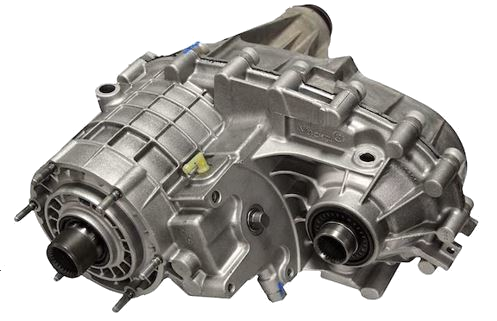When it comes to your vehicle, every component plays a crucial role in ensuring smooth operation. One often overlooked part is the transfer case. This essential unit helps manage power distribution between the front and rear axles, especially in four-wheel-drive or all-wheel-drive systems. But what exactly is a transfer case? Why does it matter for your driving experience? In this blog post, we’ll dive into the functions of a transfer case, explore its various types, highlight signs that something might be off, and share tips on how to care for this vital piece of machinery. Whether you’re an automotive enthusiast or just want to keep your ride running smoothly, understanding the intricacies of your transfer case can make all the difference. Let’s get started!
Functions of a Transfer Case
The transfer case plays a crucial role in four-wheel-drive and all-wheel-drive vehicles. It distributes power from the engine to both the front and rear axles, ensuring optimal traction on various surfaces.
One key function is managing torque distribution. This allows for better handling in challenging conditions like mud, snow, or off-road terrains. The system adjusts power between wheels, enhancing stability and control.
Another important function is providing different drive modes. Drivers can switch between two-wheel drive for fuel efficiency and four-wheel drive for improved grip when needed.
Additionally, the transfer case houses gears that reduce speed while increasing torque. This feature is essential during steep climbs or descents where extra power is necessary to navigate safely.
Without a properly functioning transfer case, vehicle performance can suffer significantly in adverse conditions.
Types of Transfer Cases (Part-time, Full-time, Electronic)
Transfer cases can be categorized into three main types: part-time, full-time, and electronic.
Part-time transfer cases are designed for vehicles that primarily operate in two-wheel drive. When off-road conditions arise or extra traction is needed, the driver can manually engage four-wheel drive. This type is ideal for those who want flexibility without added fuel consumption.
Full-time transfer cases provide power to all four wheels continuously. They often have a center differential that allows for differences in wheel speed between the front and rear axles. This setup enhances stability on various terrains, making it suitable for frequent off-roaders.
Electronic transfer cases use advanced technology to manage power distribution automatically. Sensors detect driving conditions and adjust accordingly, optimizing performance without driver intervention. This innovation offers convenience while enhancing safety in challenging environments.
Common Signs of Transfer Case Problems
Recognizing issues with your transfer case early can save you from costly repairs. One common sign is unusual noises when engaging or disengaging four-wheel drive. Grinding, clunking, or whining sounds can indicate internal problems.
Another red flag is difficulty shifting between modes. If the lever feels stuck or requires excessive force, it’s time to investigate further. Fluid leaks underneath your vehicle are also concerning—transmission fluid should remain contained within the system.
Pay attention to warning lights on your dashboard as well. If the four-wheel-drive indicator flickers or remains illuminated while driving in two-wheel mode, don’t ignore it.
If you notice a loss of power during acceleration or poor traction in slippery conditions, these may suggest that the transfer case isn’t distributing power effectively. Immediate assessment by a professional might be necessary for any of these signs.
How to Maintain and Care for Your Transfer Case
Maintaining your transfer case is essential for the longevity of your vehicle’s drivetrain. Regular inspections are crucial. Check fluid levels frequently and ensure they meet manufacturer specifications.
Fluid changes should occur as recommended in your vehicle’s manual. Dirty or low fluid can lead to serious issues, so stay proactive.
Listen for unusual noises while driving, such as grinding or clunking sounds when shifting between drive modes. These can indicate underlying problems that need attention.
Ensure all seals and gaskets are intact to prevent leaks. If you notice any drips under your vehicle, investigate promptly to avoid more extensive damage.
Don’t forget about the impact of off-roading on your transfer case’s health. After a tough trail ride, give it some extra care by cleaning debris away from its components and checking for wear and tear.
Replacing a Faulty Transfer Case: DIY vs Professional Repair
When it comes to replacing a faulty transfer case, you have two main options: do-it-yourself or seek professional help.
If you’re handy with tools and have experience working on vehicles, a DIY approach can be rewarding. It allows you to save money while gaining valuable skills. However, this task requires significant mechanical knowledge and the right equipment.
On the other hand, if you’re uncertain about your abilities or lack the necessary tools, hiring a professional may be wise. Mechanics have specialized training and access to advanced diagnostic tools that ensure accurate repairs.
Consider factors like time constraints and potential headaches when making your choice. A poorly executed repair could lead to further issues down the line. Choose wisely based on your comfort level and expertise in automotive work.
Conclusion and Final Thoughts
Understanding the role of a transfer case in your vehicle is crucial for maintaining its performance, especially if you drive an all-wheel or four-wheel-drive model. Recognizing the functions and types of transfer cases can help you choose the right vehicle for your needs.
Being aware of common signs that indicate problems with your transfer case allows for timely interventions, potentially saving you from more extensive repairs down the line. Regular maintenance is essential to ensure its longevity—simple practices like checking fluid levels and keeping it clean make a significant difference.
When it comes to addressing issues with a faulty transfer case, weighing DIY options against professional repair services can save both time and money. Each choice has its advantages depending on your skill level and comfort with automotive work.
Caring for this critical component will enhance not just the lifespan of your vehicle but also provide peace of mind during every journey. A well-functioning transfer case contributes greatly to safety and overall driving experience. Stay informed about this vital part of your car’s drivetrain system so that you’re ready when challenges arise.


